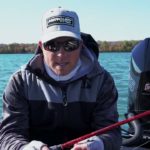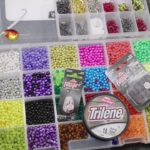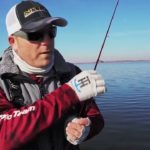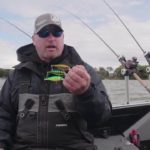Own the Transition
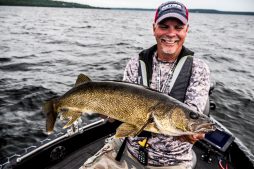
The Summer peak is exactly that— walleyes will bite anything. Jigs, live bait, crankbaits, spinners, you name it. Unfortunately, rising water temperatures, shad spawn, shiner and perch fingerlings, mayflies, or all of these at once spreading out the fish and giving them more than their fair share of natural sustenance.
When smaller fish take over where larger fish once roamed, and the numbers of bites drops off dramatically the peak is over. Looking around, the lake may seem daunting but walleyes are completely predictable. They will head towards deeper structure, basins, and will chase suspended bait. In some ways this makes it simpler—we put away the live bait and focus on two fishing methods the rest of the year—high-action Shiver Minnows and deep trolling crankbaits.
These lures work best to target fish hanging on, or suspending off of structure. With the fish inhabiting all of these areas (plus a few in shallow weeds and wind-blown points) the missing link for success quickly becomes the skill to interpret sonar readings from the Lowrance HDS. An angler who can locate fish and determine the layout of the area using C-Maps and Genesis Live mapping will make the right presentation choice.
A point with localized rock piles, inside turns, and boulders leads to a Moonshine Shiver Minnow jigging approach. Trolling these areas would take too much time letting out line and the lures might not actually contact the structure. Jigging can be done vertically to specific fish, casting and working shallow-to-deep with a snap retrieve, or even strolling at 0.7 mph popping the lures off the bottom. All of these options keep the lure in the strike zone for bottom-hugging walleyes and the erratic jumping motion of the lure triggers strikes all the way until late October.
The first sign for the trolling rods to exit the rod storage is empty structure. After scanning three or four deeper points, rock ledges, boulder fields, plus your favorite flat do not push the issue. The fish have moved. Firmly focused on the Lowrance screen we start in the area of the structure we just reviewed. We fan out into the basin looking for loosely separated fish hanging near the bottom. With the right conditions these fish move up onto the point, but spend most of the time waiting for twilight, wind, or some other trigger. While other boats keep jigging shallower, a quick run through these fish with crankbaits on lead core will put fish into the boat.
If the walleyes completely vacated the area, it is time to look for bait over deeper water. Downwind basins are a good place to start. In some bodies of water, the walleyes will be visible on sonar. In others, we simply assume the walleyes will be near the bait. Put way points over single bait balls or even huge masses of marks. Fishing literally becomes a game of connect-the-dots. Trolling details have been covered in previous articles. Basically, we use the Precision Trolling app and Off Shore Tackle Planer boards to confidently troll crankbaits above and below the bait.
The one-two punch of jigging Shiver Minnows and trolling crankbaits goes on for months. The nice part is we only need a small amount of tackle in the boat. A couple of jigging rods, some lead core, and some trolling rigs. Find one pattern and it will be consistent for the long haul. It takes some work, but it’s worth it to find the Next Bite.


